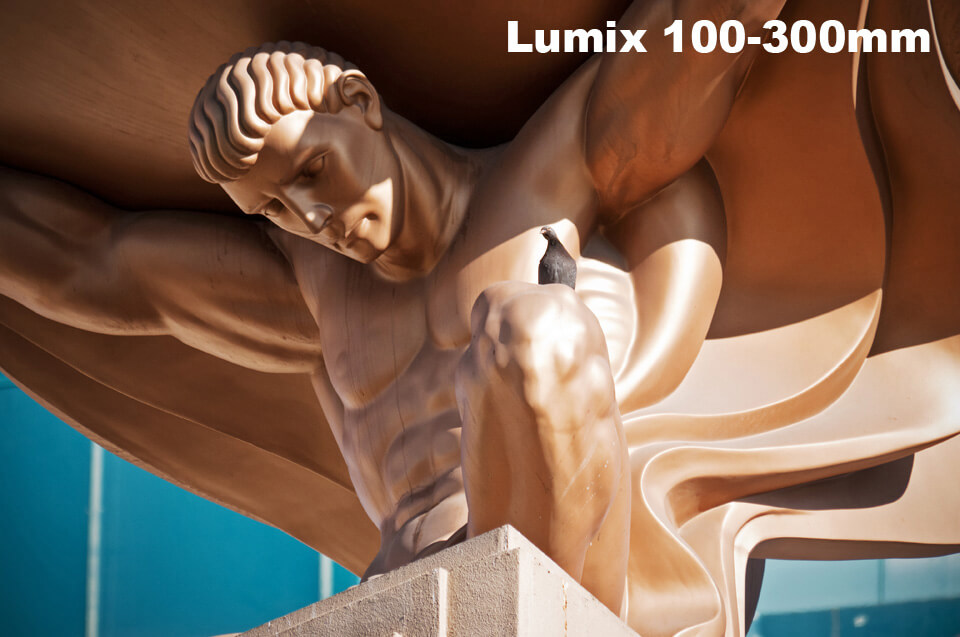What’s the Right Micro Four-thirds Lens for You?
From the Best of Mark Toal
If you’re a regular reader of this blog, you know that recently we’ve been featuring lots of lenses. There’s more to come with my upcoming reviews of the Sigma 30mm f/1.4, Lumix G Leica DG Nocticron 42.5mm f/1.2 and the Leica DG Summilux 12mm f1.4 lenses. To kick off this stampede of lenses, here’s the wit and wisdom of Mark Toal on the subject of lenses.—Joe Farace
Whenever I meet somebody that has a Micro Four-thirds camera one of the first questions they ask me is “what lens should I buy next?” Frequently they’ve already purchased a Panasonic Lumix or Olympus body along with a kit lens and can’t wait to start adding a few accessories.
 I usually suggest that people shoot with the kit lens for a while, especially if they don’t know what they like to shoot, and see what focal length they end up using the most. If they more often shoot at the wide end of the lens then a fixed focal length wide angle prime lens might be perfect. It they constantly want to zoom closer, then a zoom telephoto is best.
I usually suggest that people shoot with the kit lens for a while, especially if they don’t know what they like to shoot, and see what focal length they end up using the most. If they more often shoot at the wide end of the lens then a fixed focal length wide angle prime lens might be perfect. It they constantly want to zoom closer, then a zoom telephoto is best.
Frequently they have a lens in mind like the famous Lumix 20mm f/1.7. The 20mm seems to be the biggest selling Micro Four-thirds lens to date but it’s not for everybody. It was the first lens that I bought for my Lumix G1 and I loved its sharpness and speed but I ended up selling it after a few months and buying the equally affordable Lumix 14mm f2.5 ASPH II. I had fallen for the excitement around the 20mm lens and forget that I’m really a wide-angle lens shooter. The 40mm (equivalent) was just too long for me. The 14mm (28mm equivalent) has been my favorite lens ever since then.
 On the other end of the focal length range, a telephoto seems to be the next lens people might want to buy and there are many choices available. If you like to shoot wildlife, birds or sports then you’ll want a longer zoom lens like the Lumix 100-300mm f/4-5.6
(200-600mm equivalent.) I usually recommend that photographers start with a lens in the 45-200mm focal length range. This focal length range works great for portraits since it throws the background out of focus and compresses objects so they don’t look distorted. It’s also a great lens for sports and landscape shooting. It’s also not such a long telephoto that you can’t shoot closer action if you need to. Tip: Before you buy a lens think about what you like to shoot, not what lens you want to buy.
On the other end of the focal length range, a telephoto seems to be the next lens people might want to buy and there are many choices available. If you like to shoot wildlife, birds or sports then you’ll want a longer zoom lens like the Lumix 100-300mm f/4-5.6
(200-600mm equivalent.) I usually recommend that photographers start with a lens in the 45-200mm focal length range. This focal length range works great for portraits since it throws the background out of focus and compresses objects so they don’t look distorted. It’s also a great lens for sports and landscape shooting. It’s also not such a long telephoto that you can’t shoot closer action if you need to. Tip: Before you buy a lens think about what you like to shoot, not what lens you want to buy.




